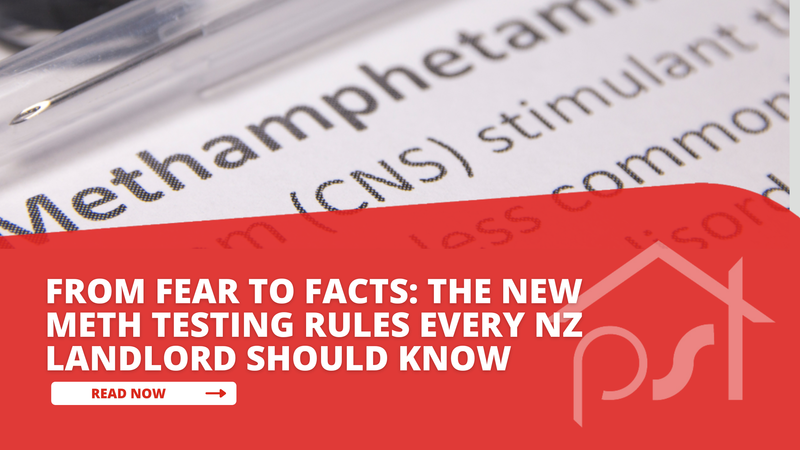The New Meth Testing Rules Every NZ Landlord Should Know

Associate Housing Minister Tama Potaka noted that tenants and landlords deserve clarity on when testing is required, what risk management entails, and how these issues should be navigated during a tenancy.
The good news is that this confusion is ending. Following extensive public and scientific consultation, the Government is establishing clear, science-backed regulations designed to ensure a safe, cost-effective, and proportionate approach to managing meth residue.
The Two Official Thresholds: Clarity for the Industry
The new framework minimizes health risks while providing certainty. The regulations introduce two critical, evidence-based thresholds that put an end to the previous conflicting standards (such as the strict 1.5 µg/100cm² recommendation versus the scientifically preferred 15 µg/100cm²).
These "magic numbers" are:
1. The Contamination and Decontamination Trigger: 15 µg/100cm²
• A rental property is officially deemed contaminated if methamphetamine residue exceeds 15 micrograms per 100cm².
• If contaminated, the property must be decontaminated until levels are at or below this 15 µg/100cm² threshold.
• This level aligns with expert advice, as cleaning a property below 15 µg/100cm² is "highly unlikely to result in additional health benefits for residents, while resulting in additional costs". This standard ensures that remediation works are only undertaken where necessary and to the extent required.
2. The Maximum Inhabitable Level and Tenancy Termination Trigger: 30 µg/100cm²
• When residue levels are above 30 micrograms per 100cm², both the landlord and tenant gain the option of quickly ending the tenancy.
• Setting this threshold higher than the contamination level (15 µg/100cm²) is crucial for proportionality. It prevents tenancies from being terminated at lower levels where the costs and risks associated with tenancy termination may outweigh the risks posed by the residue.
Clear Requirements for Landlords and Testing
The new rules establish a clear process to ensure scientific rigor and accountability:
• Mandatory Testing: Landlords are required to engage professional testers in specific circumstances where there is evidence of contamination.
• Decontamination Timelines: If tests confirm contamination above 15 µg/100cm², decontamination must be carried out 'as soon as practicable'.
• Two-Tiered Testing: Anyone (including landlords or tenants) can conduct an initial screening test using approved kits. However, any full detailed assessment that can trigger legal action or requirements under the regulations must be done by a qualified professional using an accredited lab. This balances accessibility with proper scientific rigor.
• Handling Abandoned Goods: Clear rules will govern abandoned goods in contaminated properties, requiring them to be treated as if contaminated. Before selling unclaimed goods, they must be decontaminated and re-tested to confirm they are no longer contaminated.
Conclusion and Implementation
These new regulations deliver certainty, safety, proportionality, and fairness to the rental market. They replace subjective measures with defined scientific boundaries, ensuring that costs are appropriately managed and health risks are minimized based on expert advice.
The regulations are expected to come into force next year. This timeline allows the sector to align processes with the new standards, ushering in an era where meth contamination management is driven by fact, not fear.
Helping Wellington Landlords Stay Ahead
At Propertyscouts Capital City, we make sure our landlords stay ahead of every regulatory change - from meth testing to tenancy compliance.
If you own a rental property in Wellington and want clarity on how these new meth contamination rules affect you, we’re here to help.
Send me a message or visit our website to discuss how we can protect your investment while keeping your tenants safe.
